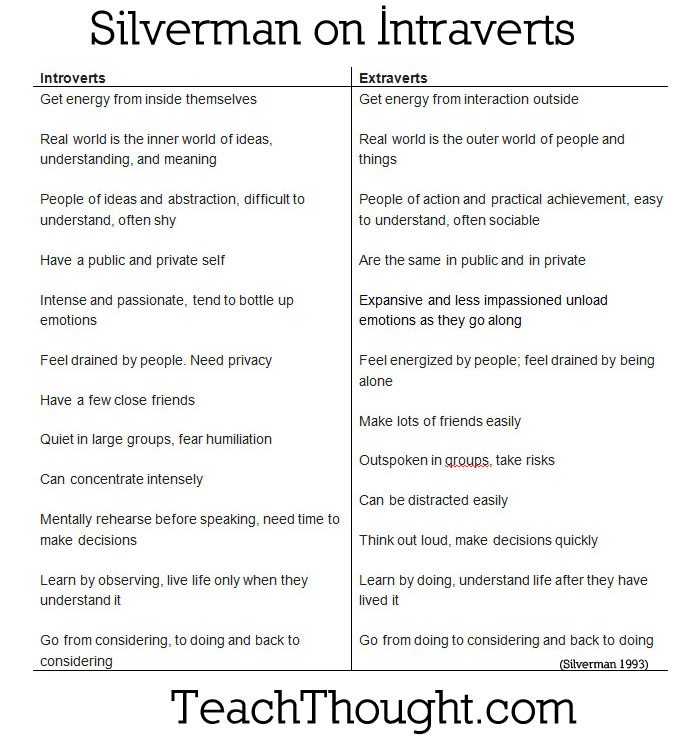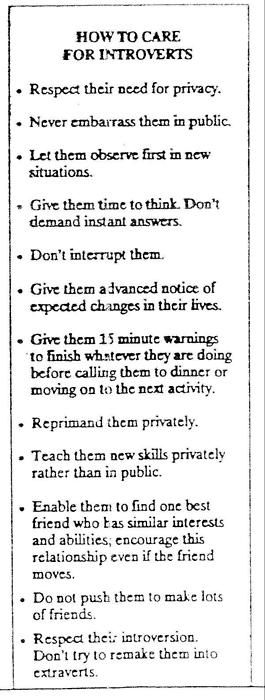
Why Teaching Introverts Is Different
by Terry Heick
As education seeks to improve itself, the focus has been on data, research, and curriculum.
The stuff teachers use.
There is precious little discussion on the human elements of learning unless you’re discussing isolated movements such as social-emotional learning or whole-child trends. While admirable, these “movements” are unfortunate because via they are inevitably untangled from the stuff teachers actually use–lesson planning, data, research, and curriculum. They are thus seen as separate “things to do,” and, not being measured, end up back-burnered in pushes for moving the needle on testing proficiency.
Some of this is for practical reasons. Teaching introverts–or extroverts for that matter–requires an always-on honoring of every single student as an impossibly complex creature with an equally complex history. Which is impossible in a class of 30+ students, no matter how extraordinary the teacher.
In these environments, students must develop self-defense mechanisms to cope with the experience, which, while “real life,” leaves significant portions of your classroom emotionally uncomfortable, to varying negative effect.
While extroverts are expressive, demonstrative, and more easily comfortable, introverts require a deft and caring hand rather than “classroom management.” This means, like learning, relationships must be personalized, different for each student.
Fair isn’t always equal.
The tact that works with one student may not with another, and that isn’t usually isn’t a matter of defiance or even stubbornness; it could simply be the way the student is screwed together.
The simplest takeaway here is that for introverts, emotional security precedes learning. Being comfortable emotionally isn’t just helpful, but absolutely necessary.
An article at the NSW Association for Gifted & Talented students (that also referenced Silverman’s work that we share below), shared an interesting reality not often considered: “In Western society, extraverts outnumber introverts 3 to 1. They are more vocal than introverts and are more understandable than introverts.
However, it appears that introversion increases with intelligence so that the majority of gifted children are introverts. (Silverman, 1988)”
Essential Differences Between Introverts & Extraverts

Other Resources
On the topic of teaching introverts, here is another great post from edutopia, and some additional reading can be found in Quiet: The Power of Introverts in a World That Can’t Stop Talking. But the following simple sidebar is extraordinarily helpful in itself, offering some helpful tips for working with emotional students, including:
1. Never embarrass them in public
2. Let them observe first in new situations
3. Give them time to think
4. Reprimand them privately
5. Be mindful of transitions
Image attribution flickr user wolfganglonien

